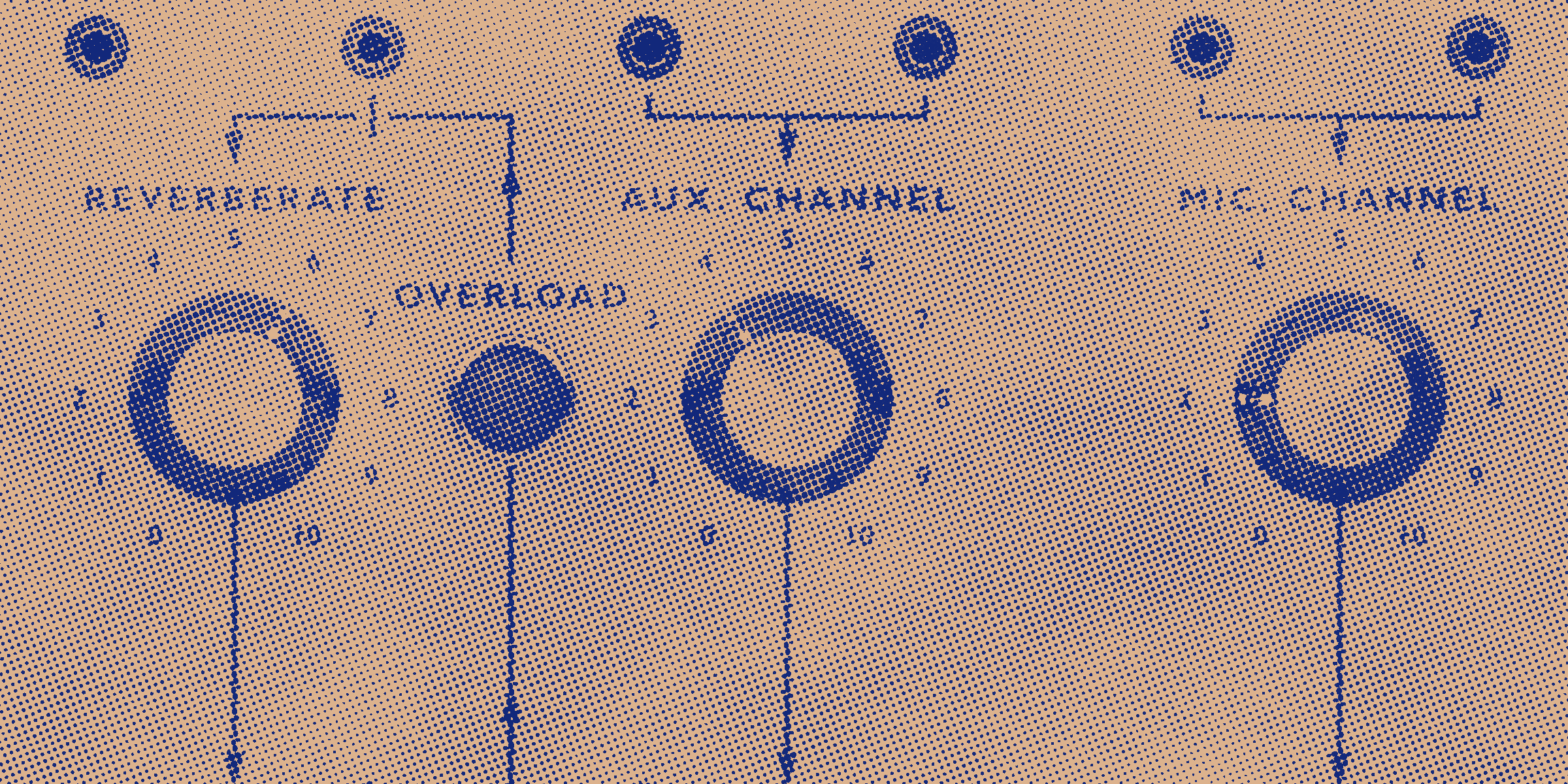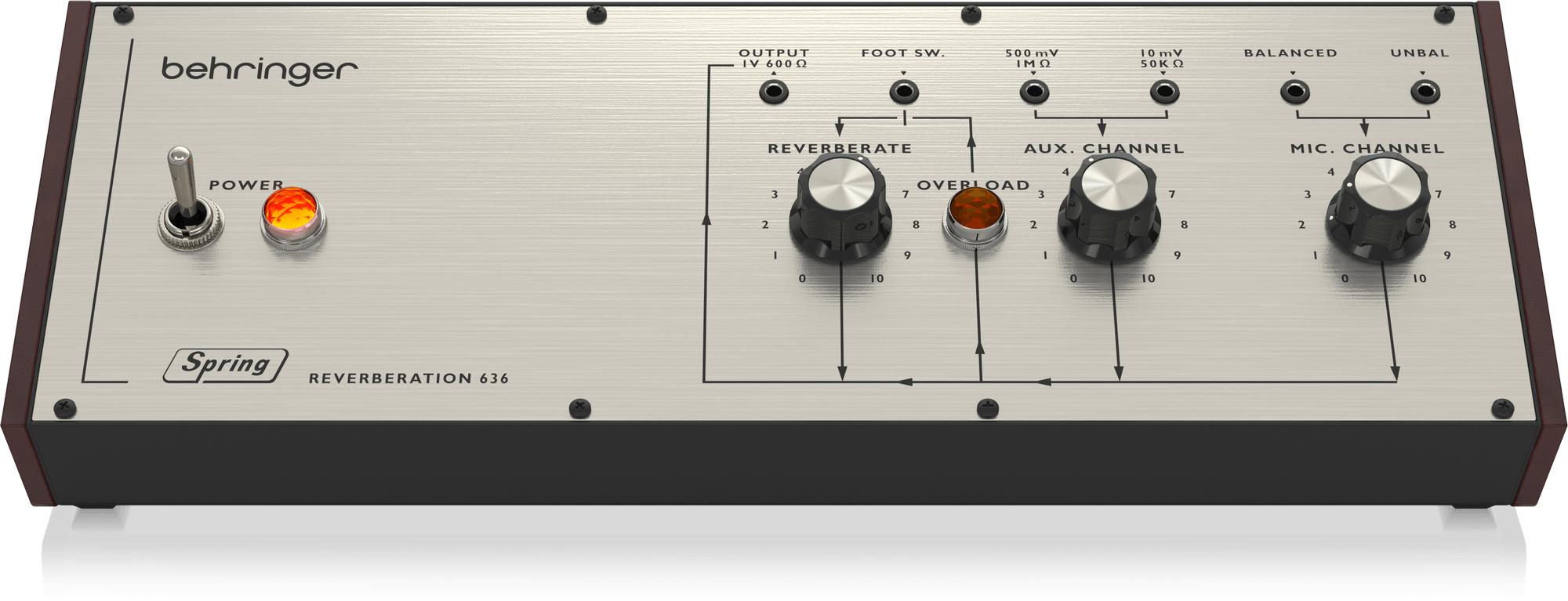Behringer launch the Grampian-inspired Spring Reverberation 636
Reviving the classic sound of the Grampian with Behringer's new Spring Reverberation 636. A true analog spring verb and pre-amp that emulates the Dub Reggae and Rock classic.

Behringer is kicking off 2024 with some surprising and stylish new announcements. The new Behringer Spring Reverberation 636 is a replica of the revered Grampian 636 spring reverb and analog pre-amp. It's not a digital emulation, as this is a real mechanical spring reverb unit housed in the now familiar Behringer form-factor, with some very welcome modern twists.
A little background on the importance of spring reverb
It's hard to imagine the history of modern music without spring reverb, given the role it played both in Dub Reggae (thanks to the likes of Lee "Scratch" Perry and King Tubbie), and in Surf Rock (where we think of Dick Dale or even The Shadows.) While the latter might have used the Fender era offerings for that "surf drip" sound, it was the Grampian 636 that was at the heart of the deeper sounds we've come to think of as synonymous with spring reverb and Dub music.
This sound and aesthetic have evolved with acts like Fat Freddys Drop, the iconic New Zealand Dub Reggae act, and of course all the genres it spawned, from UK Jungle to the original deeper Dubstep and any combination of modern Bass or Beats culture.
It wasn't just the deeper (and dare I say blazed-up) end of the spectrum that were drawn to the Grampian 636. The go-to example of the kinds of rock musicians adding these units to their rig includes Pete Townsend of The Who, using the pre-amp on the unit for some of the saturation and texture that his guitat tone is renowned for. In more recent decades it has become a "character box" for studio sessions, and I can remember bands like mine in the early 2000s running our MPC and AKAI S2000 samplers through them in studio mixdown sessions as a method of giving an extra sense of crunch and excitement to our music written in the peak of the samplephonic era. There was a distinct difference between the Grampian's Germanium pre-amp tones, and what we had been doing by overdriving our cheap Mackie mixers. Now that's a lot more accessible.
Emulation options for the Grampian sound
As with classic gear of decades (and decades and decades) gone, the Grampian 636 has been priced out of reach of the casual user. And for most serious studios too. The efforts of the awesome Soundgas crew in not just maintaining the original units for their customers, but in collating an incredible resource on the mysterious box, led to a limited run of recreations that were snapped up like hotcakes.
The Soundgas project focused on the nuanced characteristic of both the reverb and the preamp. While the spring tank is new, the British Germanium transistors used in the preamp circuit are "new old stock", and incredibly rare to the point of impossibility. The units sold out fast and will be classics in their own right.
That has just left software emulations for the rest of us. I've been fond of the Arturia Spring-636 Reverb emulation of the Grampian in their excellent FX Collection series. This faithfully recreates the style and workflow of the Grampian hardware unit, with the advantgae of software flexibility, such as pre and post EQ filtering and even different reverb models. What's interesting in a software emulation is that it can be easily overlooked as anything but a reverb effect, where the preamp characteristics have become so much a part of my workflow that it is hardwired into my production template. Suffice to say I'm very fond of the original, and the emulations too, and will be checking the Behringer unit out as soon as it ships. Now with context aside, let's look at what it exactly Behringer has done both authentically and differently here.

Now back to the Behringer-inger-inger
The Behringer Spring Reverberation comes in the same skiff that we've come to expect as a common form factor for the company now. The units can be racked up with siblings like the Neutron and Model D (Moog clone) and K2 (MS-20 clone). When done so these can look like a quirky and accessible little array, but the unit can also be racked up more typically via optional rack ears. We'll get to the modular options in a minute.
The overall interface follows the workflow of the original, which had inputs for both line level and microphone level signals, making it easy to patch into directly. The Behringer version follows suit with balanced and unbalanced inputs hitting the pre-amp for level setting (or outright saturation) before moving on to the reverb stage. This is an actual mechanical spring, which we have seen smaller versions of in gear like the "Gray Meanie" edition of Behringer's ARP2600 clone.
The addition of a footswitch input acts as a bypass to the reverb stage, allowing you to either run 636 as a pre-amp only, or to creatively switch in and out the reverb stage. The Dub Reggae use of this would be akin to throwing a snare sound into a deep reverb as an empashsis hit. But there's some interesting potential introduced here. And that's where the inputs come in.

Jacked into the studio and modular community
The Behginer 636 has the standrd 1/4" phone jacks on the back, accepting balanced and unbalanced inputs, as well as the output, footswitch and auxiliary inputs. On the front of the unit is where things gets interesting. The inclusion of 1/8" minijacks on the frontside of the case make this a tool for the modular enthusiasts. This opens the possibilities of being able to use that "footswitch" input as a programmatic trigger, allowing for rhythmic effects or trigger-speciufic spring reverb sends. This best of both worlds approach is savvy, and shows how Behringer's product roadmap caters to both the legacy clone enthusiasts and the emerging modern workflows, and does so with cosnsitent form factors and standards.
So who is this really for?
The thing that I appreciate about Behringer is the second order effect that their reissues have had on both recognising the icons of the culture of recorded music, and challenging the extremes of studio mysticism. While I've written before about this topic, in summary I like that Behringer asks us to be really honest about our relationship to music making, music culture, and each other. And creates optionality for musicians. Now including an analog spring reverb with onboard pre-amp in compact form factor and lots of ins and outs. And according to Behringer it's all for a list price of $199, shipping from the factory now, and in stores soon.